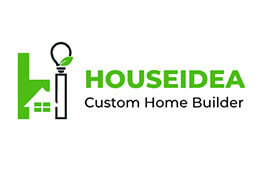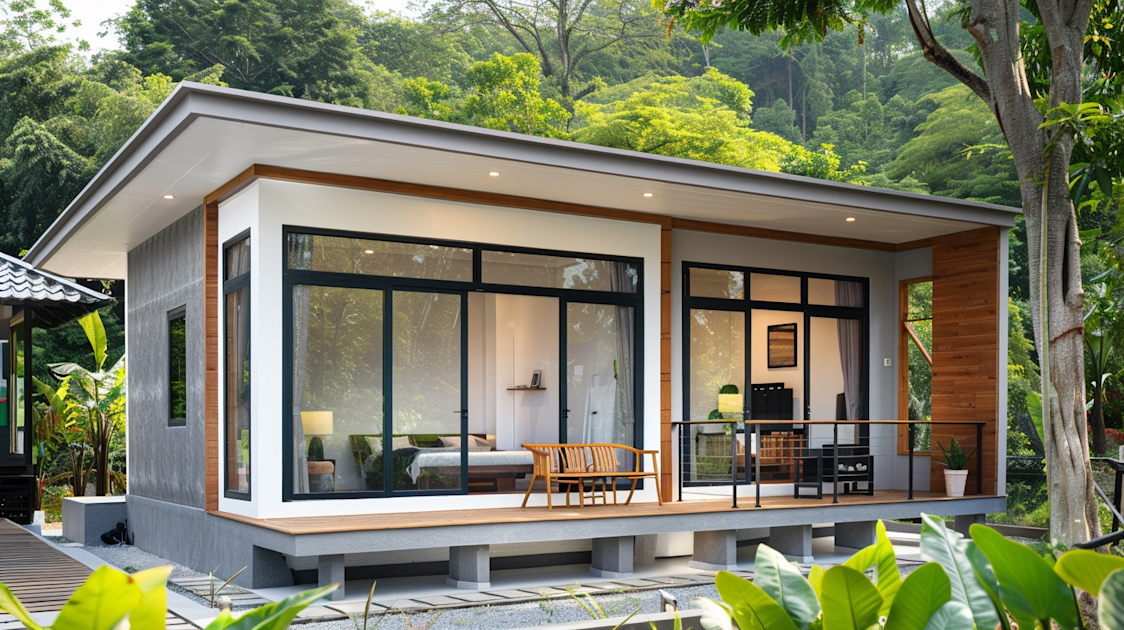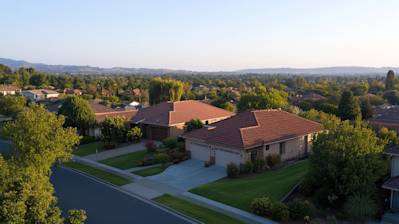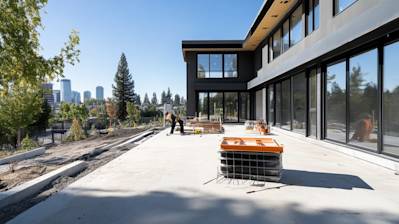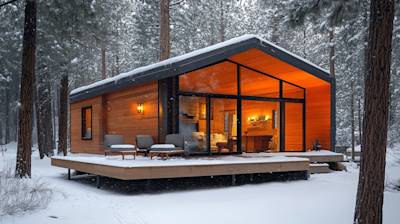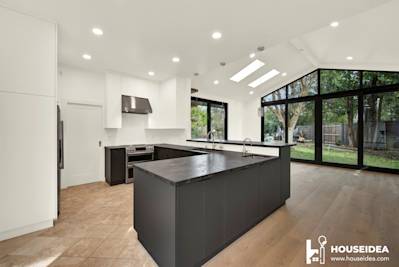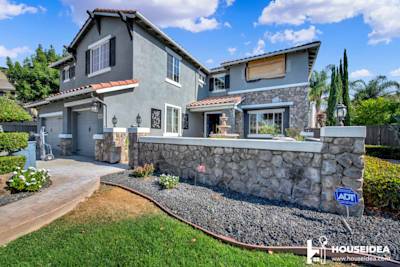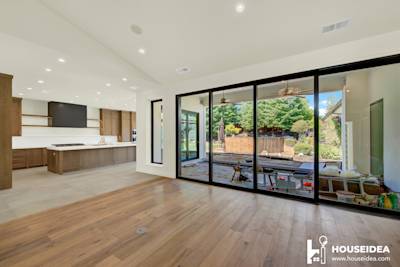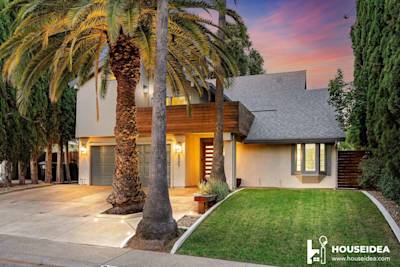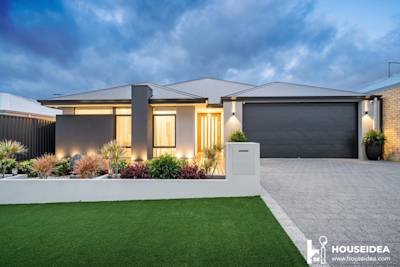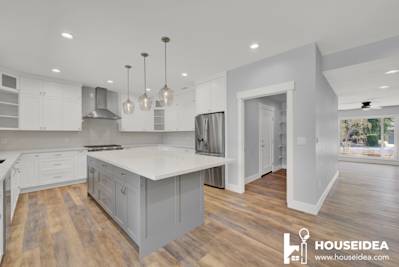The interest and demand surrounding Accessory Dwelling Units (ADUs) have seen a substantial rise in the recent past. Positioned as a solution for affordable housing issues, they offer both auxiliary income and increased property worth for homeowners. However, among the frequently asked questions is - how much does an ADU cost? In this comprehensive guide, we delve into understanding the range of expenses that come into play when adding this beneficial property feature.
The Breakdown: Understanding the ADU Cost
Understanding the ADU Cost involves several elements that contribute to the overall expenditure. Below, we outline each of these elements to provide a more tangible estimation.
Design Cost
The design phase plays a fundamental part in any construction process. Choosing a design professional with a wide range of experience in developing ADUs can not only save time but also reduce costs significantly. On average, the design cost for an ADU can range anywhere from $2,000 to $10,000.
Permitting Cost
Permitting cost is another factor that contributes to the final ADU cost. Though requirements may vary by city or state, an ADU typically requires multiple permits, hence the cost increases accordingly. Depending on the complexity of the project, one can expect to pay somewhere between $5,000 and $15,000 in permitting costs.
Construction Cost
The bulk of the ADU cost usually lies within the construction phase. The price for this phase varies extensively depending on factors such as the size of the ADU, materials used, and the region you reside. However, on average, the cost of building an ADU can range between $50,000 and $200,000.
Additional Costs
Additional costs might spring up in relation to landscaping, utility integration, and exterior considerations such as decks or patios. Though they might initially seem insignificant, these additions could add several thousands of dollars to your overall ADU cost.
Cost-Saving Tips for Building an ADU
Understanding the full breakdown of the ADU cost can at times be overwhelming. However, there are a few cost-effective strategies that homeowners can implement to reduce the overall expenditure.
- Pre-Designed Plans: Instead of opting for custom design plans, homeowners can choose existing designs. This way, they simplify the process by saving both time and money.
- Simple Designs: Detailed and complex designs often end up with more complications and hence more cost. Opting for simple and straightforward designs can be a cost-saving approach in the long run.
- Shared Utilities: Sharing utility lines between the main house and the ADU minimizes the need for additional groundwork and, consequently, reduces the cost.
An ADU can significantly add value to a property while simultaneously serving as a source of residual income. However, understanding the ADU cost and its various contributing factors plays a crucial role in determining the feasibility and practicality of this amenity. With proper planning, budgeting, and smart saving strategies, homeowners are equipped to make informed decisions that are both financially rewarding and meet their living needs.
FAQs on Accessory Dwelling Unit (ADU) Costs
Is the cost of an ADU per square foot a good measurement?
Cost per square foot is a common measurement in the construction industry, and it's often used to estimate ADU costs. It can be a useful tool for getting a rough idea of what a project might cost. However, it can also be misleading, because it does not account for variables such as design complexity, material quality, site conditions, and local labor rates. Therefore, while crunching numbers for ADU cost, it is important to consider these factors as well.
How does location affect ADU cost?
Location can have significant impact on ADU costs. Firstly, real estate and construction costs can vary greatly by region or even within the same city. Secondly, local building codes and regulations could add to or reduce your costs. For example, some areas may require additional engineering or design work to meet local codes, while in others, you may be eligible for cost-reducing incentives for building an ADU.
What is the typical range of ADU cost?
While it's challenging to give a universal price range given the many factors that influence cost, it's generally possible to build an ADU for anywhere from $50,000 to $200,000 and beyond. Lower-end costs might be for a basic, small unit with economical finishes. A more luxurious or larger ADU, or an ADU in an expensive area, could easily exceed $200,000.
How does construction type influence ADU cost?
Construction type is a significant factor in ADU cost. A detached ADU, for instance, is typically more expensive than an attached or interior ADU. This is because a detached ADU requires its own foundation and roof, making it comparable in cost to building a small, standalone house. Comparatively, converting an existing space like a basement or garage into an ADU can cost significantly less.
Are there financing options available to alleviate ADU cost?
Yes, there are several financing options that can help homeowners with ADU cost. Traditional mortgages, home equity loans, or lines of credit can potentially be used to finance an ADU. Additionally, some local governments and organizations offer grant programs or low-interest loans to encourage homeowners to build ADUs, often in exchange for renting the unit to low- or moderate-income households.
How can I mitigate my ADU costs?
Mitigating ADU costs can be achieved through careful planning and cost-saving strategies. Choosing a simple design, sourcing economical yet durable materials, or converting an existing space in your home into an ADU can significantly reduce the total cost. Furthermore, managing the project yourself, though time-consuming, can also save on labor costs.
What ongoing costs are associated with an ADU?
Beyond the initial construction costs, ADUs can also come with ongoing costs such as increased property taxes, higher utility bills, and maintenance expenses. If you plan to rent out your ADU, you may also have to consider costs related to advertising, property management, and landlord insurance.
Does the ADU cost include furnishing and appliances?
The ADU cost typically includes the building structure, plumbing, electrical work, and other construction-related expenses. However, furnishing and appliances are usually outside the scope of ADU construction costs unless specifically included in your contract with your builder. Therefore, remember to account for these when estimating the total investment for your ADU.
Understanding the Pros and Cons of ADU Costs
Pros of Building an ADU
Additional Source of Income
One significant advantage of the cost of creating an ADU (Accessory Dwelling Unit) is the potential for a new and continued source of income. Once you've offset the initial investment to the setup:
- You can rent the ADU to tenants for monthly income.
- It can serve as a vacation rental hotspot, especially if you reside in a popular city or near tourist attractions.
Increases Property Value
Investing in an ADU can result in a significant increase in your property's value. This addition is generally perceived favorably in the real estate market. Installing an ADU:
- Enhances the functional square footage of your property.
- Offers a versatile use of space that can attract a wider pool of potential buyers.
Provides Housing for Family
The cost of ADUs may also be justified if you need an extra space for your aging parents, adult children, or other family members. An ADU:
- Allows you to keep your loved ones close while offering them their own private space.
- Can ease the high cost of elder care or assisted living facilities.
Cons of Building an ADU
High Initial Investment
The most significant downside of ADU cost is the substantial initial investment required. The creation of an ADU:
- Involves significant construction, remodelling, and furnishing costs which can strain your budget.
- May need additional expenses for planning permissions and compliance with zoning laws.
Property Taxes Might Increase
While an ADU can increase your property's value, it can also potentially increase your property taxes. This is due to:
- Property tax assessments are often based on the value of your property. As such, improvements and additions such as ADUs can lead to tax hikes.
- Some regions reassess property tax with each substantial property improvement.
Challenges with Renting
While renting out your ADU can provide a lucrative income stream, it also presents associated challenges. These potential pitfalls include:
- You will need to act as a landlord, dealing with repairs, tenant complaints, and possibly evictions.
- Weathering possible periods of vacancy, which could impact your ability to recoup the cost of your ADU.
- Once you rent out your ADU, your insurance rates may increase due to the higher risk associated with tenant-occupied dwellings.
In conclusion, while the cost of installing an ADU can be substantial, it can provide potential rewards such as an additional income stream, increased property value, and the availability of extra living space for family members. However, potential drawbacks include high upfront investment, potentially increased property taxes, and the challenges and responsibilities of becoming a landlord. Therefore, it is advisable to thoroughly consider these factors before deciding to proceed with an ADU investment.
Summary
Overall, the ADU cost seems to vary widely based on factors such as location, size, and design preferences. Some people may find the initial investment to be steep, but it's important to consider the possible return on investment. Renting out an ADU can provide steady income, which can help to offset costs over time. An ADU may also increase the total property value, which can be beneficial in the event of a sale.
The cost of building an ADU can be daunting, but many find the financial rewards are worth the investment. Besides the monetary advantages, ADUs offer several other benefits like additional living space, or the potential for a separate office. Make sure to carefully consider your budget and potential ADU cost before starting a project, to avoid financial strain down the line.
Ultimately, an ADU cost is a relevant factor that should be taken into account when planning a renovation or expansion. While the expense is significant, the numerous benefits are equally considerable. It's also worth noting that many cities are now offering grants and loans to help homeowners with ADU construction, making this a viable and potentially profitable option for many property owners.
About HouseIdea
Welcome to HouseIdea, the go-to place for all your home improvement needs in Sacramento, CA. We're not just your typical company. Our goal is simple: to transform your house into a home that perfectly reflects your personality and lifestyle. With a dedicated team of creative professionals and a wide variety of services tailored to your needs, we guarantee an exceptional experience and results that you'll absolutely love. From small tweaks to full-blown renovations, at HouseIdea, we turn your ideas into a beautiful reality.
Tags: ADU cost, Accessory Dwelling Unit, Budgeting,
